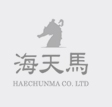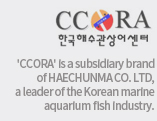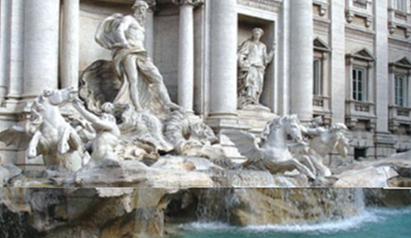
In the compound word hippocampus (seahorse), hippo means horse, and campus (kampos) means sea monster. Its name has been said to come from the horse-like sea monster drawing the ocean chariot of sea gods Poseidon / Neptune in Greek / Roman mythology. The scientific name 'hippocampus' was first given to the fish in 1950 for its resemblance to a horse and in English, it is widely called 'seahorse.'
Under the classification system, the genus Hippocampus belonging to the family Syngnathidae are all seahorses. Seahorses have been living at close quarters with humans since a long time ago. The most famous seahorse is depicted in Greek mythology as the ride of sea god Poseidon.
Under the classification system, the genus Hippocampus belonging to the family Syngnathidae are all seahorses. Seahorses have been living at close quarters with humans since a long time ago. The most famous seahorse is depicted in Greek mythology as the ride of sea god Poseidon.
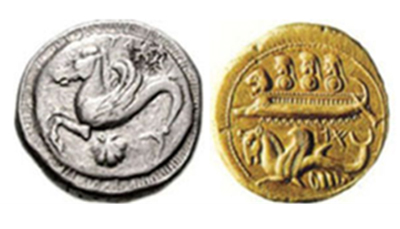
Seahorses have been living in close proximity to humans as seen from seahorse engravings on coins dated to around 5th century BC. Resembling nothing, the seahorse is unique in its appearance and there is no other animal on earth like it which bears no resemblance to anything. With a horse-like head, kangaroo-like belly, monkey-like tail and two separate eyes on its head that resembles the eyes of a chameleon, the seahorse is a cute, yet mysterious existence.
Shennong, a legendary figure in Chinese agriculture and the founder of oriental medicine, discovered medicinal herbs and poisonous plants to be used for the treatment of all diseases as written in the The Divine Farmer's Herb-Root Classic. However, the original manuscript of this work does not exist. It was the scholars of the Later Han dynasty who gathered traditional medical data, created this compilation and appointed Shennong as the founder of oriental medicine. Thus, there was no mention of the seahorse in the work at first but its contents were later edited and revised to include the seahorse and its properties.
Shennong, a legendary figure in Chinese agriculture and the founder of oriental medicine, discovered medicinal herbs and poisonous plants to be used for the treatment of all diseases as written in the The Divine Farmer's Herb-Root Classic. However, the original manuscript of this work does not exist. It was the scholars of the Later Han dynasty who gathered traditional medical data, created this compilation and appointed Shennong as the founder of oriental medicine. Thus, there was no mention of the seahorse in the work at first but its contents were later edited and revised to include the seahorse and its properties.

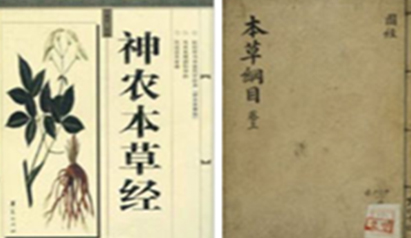
The seahorse is monogamous and is famous for the only 'male pregnancy' in the world, where the female seahorse lays eggs in the brood pouch of the male seahorse while mating during the breeding season. The male seahorse does not only care for the fertilized eggs and hatches them, but also shows extreme fatherly love to its offspring by raising it in his pouch till it reaches independence.
As of May 2004, there have been 48 species of seahorses reported worldwide. Facing worldwide extinction, all species of wild seahorses are protected and international trade is strictly prohibited according to CITES (the Convention on International Trade in Endangered Species of Wild Fauna and Flora) in 2004.
Seahorse conservation movements are actively carried out through Project Seahorse founded by Professor Vincent of Canada. In the Philippines and Peru etc., where large numbers of wild seahorses are found, a drastic reduction in natural resources has brought about protection measures and fishing bans since 4 years ago. However, wild seahorses have not been able to break out from its crisis due to bycatch, destruction of seahorse habitats, illegal fishing, and increase in seahorse consumption which is fueled by China's economic growth. Although global organizations are encouraging the human consumption of farmed seahorses to protect wild resources, seahorse farming technology is challenging to develop and implement and is therefore unable to keep up with rapidly expanding consumption trends.
As of May 2004, there have been 48 species of seahorses reported worldwide. Facing worldwide extinction, all species of wild seahorses are protected and international trade is strictly prohibited according to CITES (the Convention on International Trade in Endangered Species of Wild Fauna and Flora) in 2004.
Seahorse conservation movements are actively carried out through Project Seahorse founded by Professor Vincent of Canada. In the Philippines and Peru etc., where large numbers of wild seahorses are found, a drastic reduction in natural resources has brought about protection measures and fishing bans since 4 years ago. However, wild seahorses have not been able to break out from its crisis due to bycatch, destruction of seahorse habitats, illegal fishing, and increase in seahorse consumption which is fueled by China's economic growth. Although global organizations are encouraging the human consumption of farmed seahorses to protect wild resources, seahorse farming technology is challenging to develop and implement and is therefore unable to keep up with rapidly expanding consumption trends.
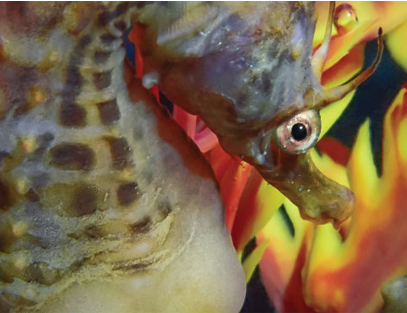
Records of using the seahorse for human health have been found in the Compendium of Materia Medica: Ben Cao Gang Mu, China's most complete and comprehensive medical book consisting of 52 volumes completed by Li Shizen in 1578 during the Ming dynasty, as well as Donguibogam: Principles and Practice of Eastern Medicine compiled by Heo Jun in 1610. Despite being listed in the Compendium of Materia Medica about 400 years ago, it is believed till now that the seahorse has an excellent effect in the treatment of diseases and in health maintenance, resulting in seahorses being constantly traded as an expensive medicinal ingredient in China and its neighboring countries.
Uses of the seahorse differ by country and region and traditional uses vary greatly. In the southern regions of China, the value of the seahorse is ranked just below wild ginseng, reflecting the deep trust the Chinese have in the seahorse. With regards to the efficacy of the seahorse, modern oriental medicine practitioners explain that in the Donguibogam, the seahorse is considered to be good for strengthening the kidneys and enhancing male virility, as well as for cooling the semen and treating penis shrinkage.
The seahorse also helps to calm the nerves, reduce swelling, regulate the Qi (energy) and blood, dilate the blood vessels, relieve coughing and ease labored breathing. It increases the weight of the uterus and ovaries and helps build muscles in the prostate, seminal vesicle and anus, and is recommended for the treatment of knee and back pain. In the 'Marine Resources and Oriental Medicine' by Professor Se-kwon, Kim of Pukyong National University, the pharmacology of the seahorse is presented as follows.
Uses of the seahorse differ by country and region and traditional uses vary greatly. In the southern regions of China, the value of the seahorse is ranked just below wild ginseng, reflecting the deep trust the Chinese have in the seahorse. With regards to the efficacy of the seahorse, modern oriental medicine practitioners explain that in the Donguibogam, the seahorse is considered to be good for strengthening the kidneys and enhancing male virility, as well as for cooling the semen and treating penis shrinkage.
The seahorse also helps to calm the nerves, reduce swelling, regulate the Qi (energy) and blood, dilate the blood vessels, relieve coughing and ease labored breathing. It increases the weight of the uterus and ovaries and helps build muscles in the prostate, seminal vesicle and anus, and is recommended for the treatment of knee and back pain. In the 'Marine Resources and Oriental Medicine' by Professor Se-kwon, Kim of Pukyong National University, the pharmacology of the seahorse is presented as follows.
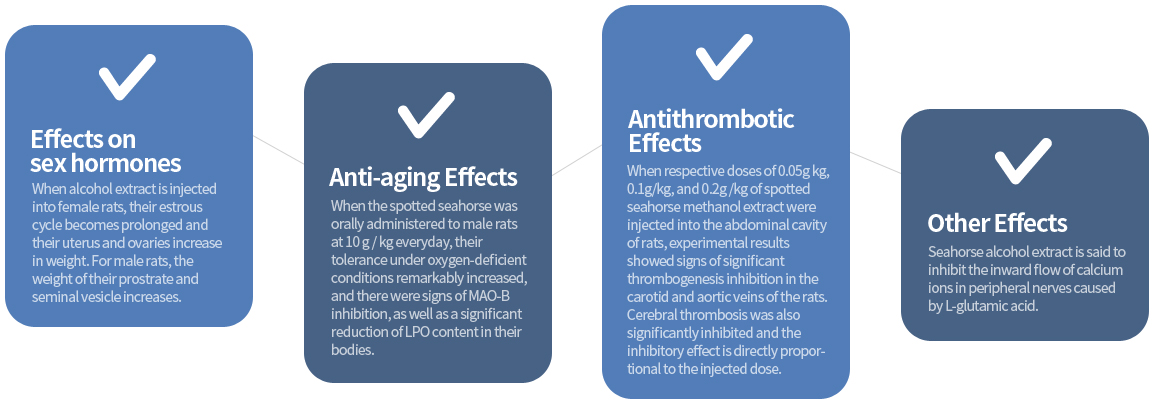
What is really surprising is that the use of the seahorse was introduced way earlier in Europe than in Asia, as recorded in the Materia Medica during the early 1st century. It was recommended that the ashes of burnt seahorses be mixed with goose oil to make ointment that helps promote hair growth when applied on balding areas. Pliny the Elder (AD 23 to 79) suggested that ointment made by mixing the ashes of burnt seahorses, seal oil and honey is effective for mucous membrane treatment in lichen and leprosy skin conditions. In addition, it can be used as an aphrodisiac and a treatment for urinary incontinence, whereas dead seahorse in rose oil is said to be good for fighting colds.
More importantly, there was also a standard textbook in Europe just like China's The Divine Farmer's Herb-Root Classic. Unlike the Chinese version which has no original text, a copy of the original European work has been preserved. Pedanius Dioscorides, a physician born during the Roman Empire, wrote De Materia Medica about 100 years before The Divine Farmer's Herb-Root Classic was completed in China. De Materia Medic is famous as a medical encyclopedia which was heavily relied upon by Europeans uptill the 16th century. (Work: De Materia Medic: a 5-volume encyclopedia about herbal medicine and related medicinal substances: Concerning medicinal matters in five volumes).
However, just like with ginseng in Korea, there were times in the past when it was difficult to identify the properties of each substance and list down their benefits, despite claims that ginseng is good for our body. Currently, there is very little or almost no information on the substances that make up the seahorse, including the properties and efficacy of these substances. In view of this, HAECHUNMA has started a collaborative research in 2015 with the College of Medicine and the College of Ocean Science at Jeju National University to study and develop functional foods containing farmed seahorses, which is also part of a three-year research project headed by the Ministry of Maritime Affairs and Fisheries. We have discovered amazing seahorse properties, as well as many surprising facts about the seahorse during clinical trials. We are currently in the process of publishing academic papers and applying for patents. We plan to conduct analysis on the results we have obtained and reveal the true functional efficacies of the seahorse in the near future.
More importantly, there was also a standard textbook in Europe just like China's The Divine Farmer's Herb-Root Classic. Unlike the Chinese version which has no original text, a copy of the original European work has been preserved. Pedanius Dioscorides, a physician born during the Roman Empire, wrote De Materia Medica about 100 years before The Divine Farmer's Herb-Root Classic was completed in China. De Materia Medic is famous as a medical encyclopedia which was heavily relied upon by Europeans uptill the 16th century. (Work: De Materia Medic: a 5-volume encyclopedia about herbal medicine and related medicinal substances: Concerning medicinal matters in five volumes).
However, just like with ginseng in Korea, there were times in the past when it was difficult to identify the properties of each substance and list down their benefits, despite claims that ginseng is good for our body. Currently, there is very little or almost no information on the substances that make up the seahorse, including the properties and efficacy of these substances. In view of this, HAECHUNMA has started a collaborative research in 2015 with the College of Medicine and the College of Ocean Science at Jeju National University to study and develop functional foods containing farmed seahorses, which is also part of a three-year research project headed by the Ministry of Maritime Affairs and Fisheries. We have discovered amazing seahorse properties, as well as many surprising facts about the seahorse during clinical trials. We are currently in the process of publishing academic papers and applying for patents. We plan to conduct analysis on the results we have obtained and reveal the true functional efficacies of the seahorse in the near future.

